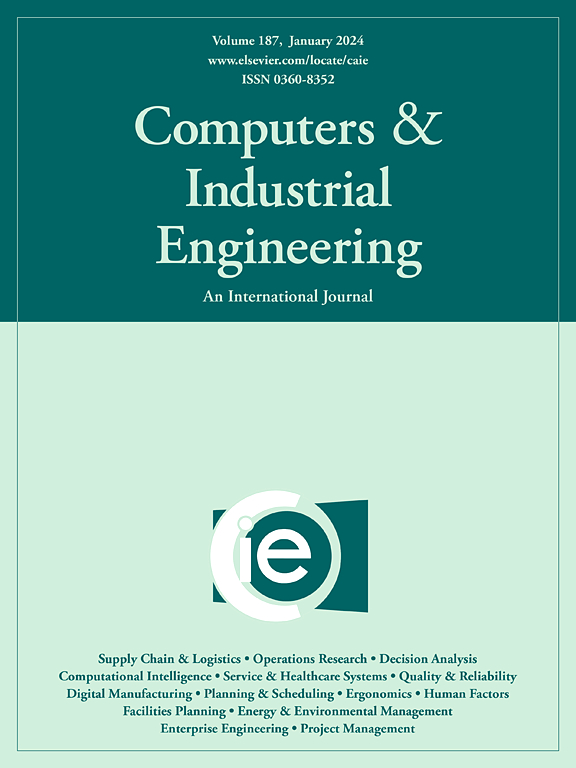A novel data-driven rule-base approach with driving factor decomposition for multi-scenario prediction on carbon emission reduction
IF 6.7
1区 工程技术
Q1 COMPUTER SCIENCE, INTERDISCIPLINARY APPLICATIONS
引用次数: 0
Abstract
Reducing carbon emissions is an ongoing goal of the whole world and its achievement requires an outstanding approach to accurately predict future carbon emissions and explore the factors driving carbon emissions. Hence, this study proposes a driving factor decomposition-based data-driven rule-base (DFD-DDRB) approach for the aim of analyzing carbon emission reduction pathway from predictive perspective, where the approach includes three processes: 1) generating a rule-base from historical carbon emission data; 2) predicting multi-scenario carbon emissions using the rule-base; 3) providing predictive analytics for future carbon emission reduction. In empirical study, the China’s provincial data from 2004 to 2021 are used to justify the applicability of the proposed approach. The experimental findings not only show that the approach can accurately predict multi-scenario carbon emissions until 2035 and reveal the factors driving carbon emissions, but also provide three implications for reducing China’s carbon emissions: 1) resource endowment should be considered to establish carbon emission management policies of 30 Chinese provinces; 2) economic development effect can be regarded as the main factor driving China’s future carbon emissions; 3) optimizing energy structure and consumption is much important for reducing China’s provincial carbon emissions. Beside the work in China, the DFD-DDRB approach can be also used as the generic analytical framework served for some developed economies and other carbon-emitting countries.
基于驱动因子分解的多情景碳减排预测新方法
减少碳排放是全世界持续追求的目标,要实现这一目标,需要有出色的方法来准确预测未来的碳排放,并探索碳排放的驱动因素。为此,本文提出了一种基于驱动因素分解的数据驱动规则库(DFD-DDRB)方法,旨在从预测角度分析碳减排路径,该方法包括三个过程:1)从历史碳排放数据生成规则库;2)基于规则库的多情景碳排放预测;3)为未来的碳减排提供预测分析。在实证研究中,利用2004 - 2021年的中国省级数据来证明本文方法的适用性。实验结果表明,该方法不仅能够准确预测2035年前的多情景碳排放,揭示碳排放驱动因素,而且对中国碳减排提供了三点启示:1)中国30个省份的碳排放管理政策应考虑资源禀赋;2)经济发展效应是驱动中国未来碳排放的主要因素;3)优化能源结构和消费对降低中国省级碳排放具有重要意义。除了在中国的工作,ddd - ddrb方法也可以作为通用的分析框架,服务于一些发达经济体和其他碳排放国家。
本文章由计算机程序翻译,如有差异,请以英文原文为准。
求助全文
约1分钟内获得全文
求助全文
来源期刊

Computers & Industrial Engineering
工程技术-工程:工业
CiteScore
12.70
自引率
12.70%
发文量
794
审稿时长
10.6 months
期刊介绍:
Computers & Industrial Engineering (CAIE) is dedicated to researchers, educators, and practitioners in industrial engineering and related fields. Pioneering the integration of computers in research, education, and practice, industrial engineering has evolved to make computers and electronic communication integral to its domain. CAIE publishes original contributions focusing on the development of novel computerized methodologies to address industrial engineering problems. It also highlights the applications of these methodologies to issues within the broader industrial engineering and associated communities. The journal actively encourages submissions that push the boundaries of fundamental theories and concepts in industrial engineering techniques.
 求助内容:
求助内容: 应助结果提醒方式:
应助结果提醒方式:


